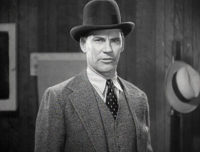 |
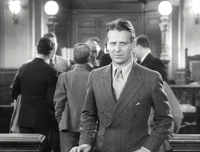 |
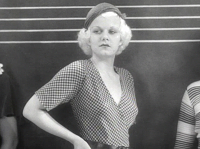 |
| Jim Fitzpatrick … Walter Huston |
Ed Fitzpatrick … Wallace Ford |
Daisy … Jean Harlow |
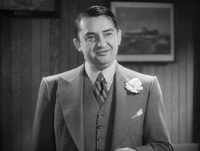 |
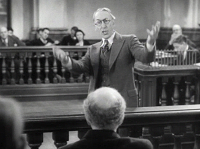 |
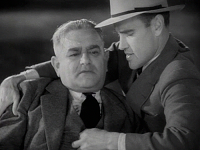 |
| Sam Belmonte … Jean Hersholt |
Michaels … Tully Marshall |
Mac … Sandy Roth |
Proof That It’s Pre-Code
- The police have tough calls to take care of, like that nude woman running around. When not bothering with that, they try and pick each other up, role playing cops and, uh, prostitutes.
- Look, someone’s nickname is ‘Easy Stevens’. It’s highly doubtful this is because their parents never considered schoolyard teasing.
- “Hey you son of a–!”
- Criminals in the film murder a kid. And are acquitted of the deed.
- Man, just watch Jean Harlow dance in this picture, that’s all you need. Or even just the moment where she implies that she doesn’t mind ‘the rough stuff’.
The Beast of the City: Monsters in the Sea of Bullets
“This town has gotten about as rotten as an open grave.”
The cops are just like you and me, you know. They have dull work, they put up with nut jobs, they gamble money, they drink, and they even have precocious families to go home to at the end of the day. If you’re one of those people who read the yellow newspapers or go see those Warner Brothers gangster pictures, you might forget this.
Beast of the City is MGM’s attempt to gently nudge the public away from the glamorous figures of crime– and from Warner Brothers’ gangster goldmine– and back to the forces of good and righteousness. They even kick it off with a bang, quoting just-to-the-left-of-Rand-Paul President Herbert Hoover to start their opening scrawl:
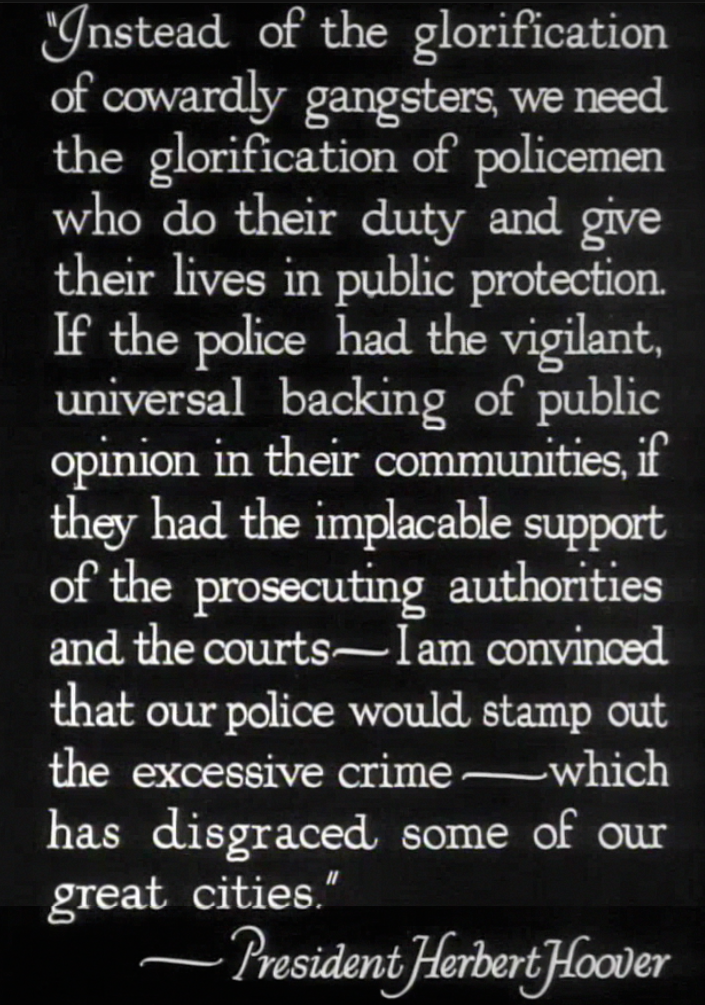
Like a lot of things that Hoover had said, this immediately stinks of shit. Beast of the City isn’t a chronicle of police goodness and humanity, but the story of a crooked cop and his attempts to make things better. It’s a little more dramatic and a little more exciting, but the film doesn’t have the overwhelming stink of propaganda that the opening scrawl indicates.
For instance, as soon as those noble words fade off-screen, we’re taken to the call center of the local police precinct. We see a couple of these calls briefly– usually telling people to calm down or take a break. We see the police on patrol, and even they are in doldrums– the most exciting call involves a skunk in a basement or a nude woman running around uptown.
Things get more interesting, though, when a quartet of bodies are found hanged in an old warehouse. Police detective Jim Fitzpatrick and his two cop buddies arrive on the scene, and make an immediate deduction: it’s a mob hit. Discontent to just round up the usual suspects, Fitzpatrick heads down to the warehouse and picks up Sam Belmonte, your local Al Capone stand-in.
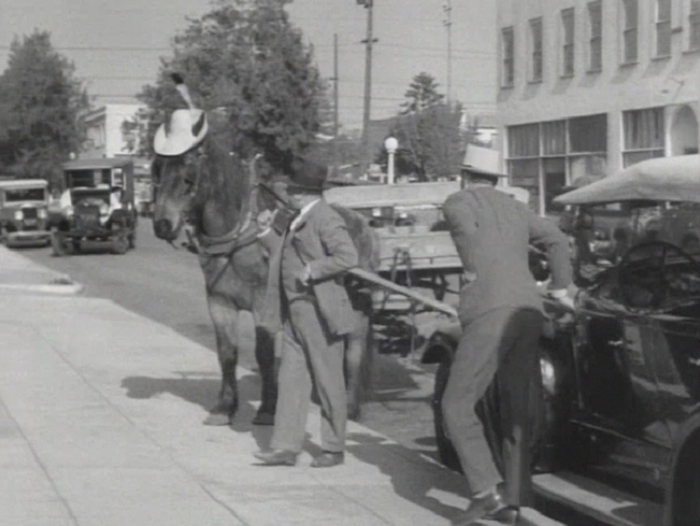
In what kind of place do horses wear hats?
Since Fitzpatrick can’t pin anything on him besides the fact that he sure does gloat a lot for a person in police custody, his bosses are tired of the shenanigans and let Belmonte go. In hopes of saving face, they also reassign Fitzpatrick to a quiet faraway neighborhood. The kind of place where horses wear hats.
At home, we find that Jim Fitzpatrick’s fanatical devotion to crime fitting is usually waylaid by his precocious family life. He has twin teenage daughters who make abysmal pancakes, a son who begs him to read the comics, a doting wife, and then a live in brother, Ed. Ed’s also a police officer, though he works in the vice squad bringing in the drunks.
Ed’s got a problem, and that’s that he finds police work kind of dull. When his brother tries to get him to continue to spy on Belmonte for him, Ed instead becomes focused on one of Belmonte’s beautiful molls. That’s Daisy. He follows her up to her apartment one night, and while he can point out one or two tricks she tries on him– women rarely lie like that on the couch without wanting something. Poor Ed, though, the malaise that police work has put in him soon runs up against the fire Daisy sets in his groin region.
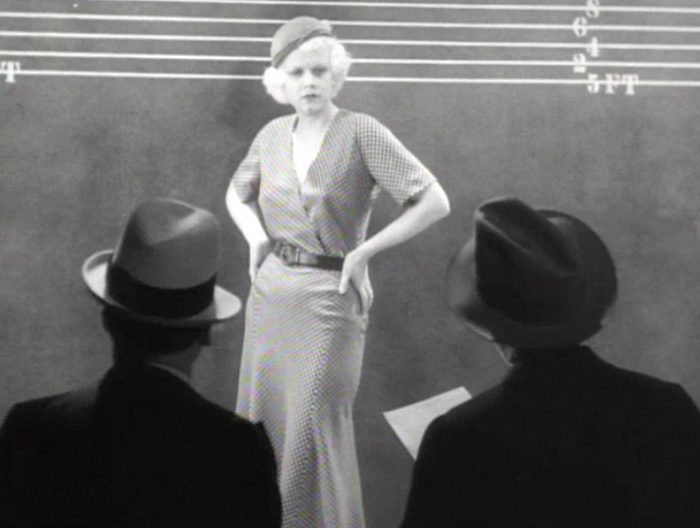
“Excuse me, miss, what do you know about groin fire reduction measures?”
They’re in her apartment, talking, drinking. She gets up and intones the truth of the matter: “You drink beer to make you cool, and it just makes you hot.” She opens up a window and spies in the tenement across the way a woman belly dancing to a crowd of agreeable men. Ed walks over and catches a glimpse as well. This is his exact reaction:
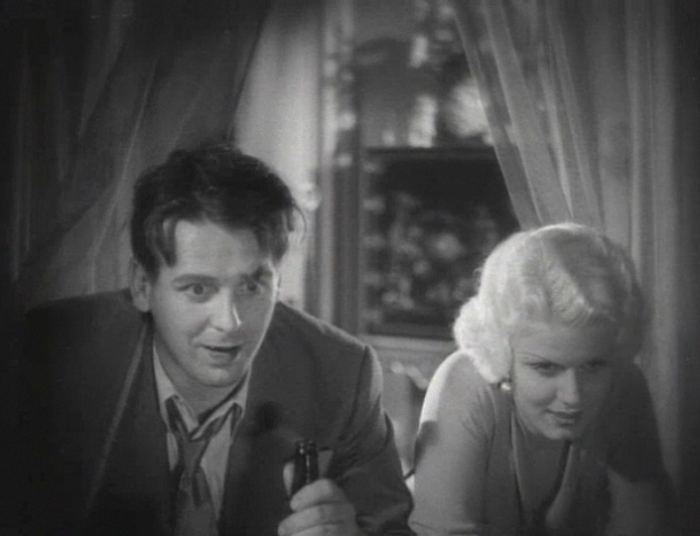
So, if you couldn’t tell, being on the vice squad doesn’t make you immune to vice.
Daisy, though, sees the woman dancing and takes it as a challenge. Actress Jean Harlow is just coming onto her own around this time– MGM was finally transforming her from a beauty icon to an actress– and her seduction of the hapless Ed by writhing and laughing is, to be polite, damned sexy. She got him drunk on her.
This is where problems emerge, though, since Daisy is still a gangster girl at heart, and has an affinity for the finer things in life. Ed’s paycheck isn’t helping their relationship, and while Jim gets promoted to chief after a spectacular gunfight with some dangerous desperadoes, he still won’t give his brother a promotion until he proves himself.
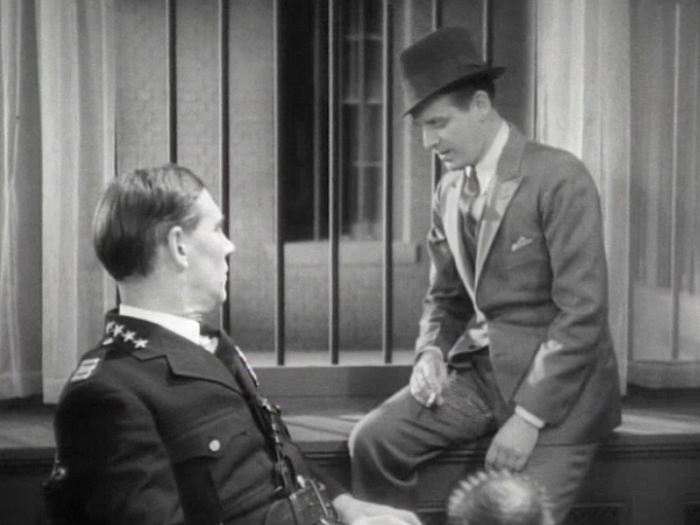
“Come on, bro, I need some money. Bro. Broseph. Brospehine. Bro-enstein?”
Ed’s head is mixed up though (too much time at the speakeasies), and when given a prime opportunity to prove himself by guarding the transport of some bank money, he instead conspires with the mobsters his brother despises. The results are disastrous, as Jim has his brother followed for protection and instead see a chase that results in a dead kid and one of his best officers gunned down.
Ed is understandably upset, especially when the cowardly crooks point their fingers at him. The three are tried together, but they have a friend in Belmonte, who is more than happy to get his nemesis’ brother acquitted in a direct rebuke to Jim’s authority. The gangsters easily intimidate the jury, laughing all the way home.
The world Beast of the City shows is certainly a grim one. The journalists, when not casually eating sandwiches next to corpses, delight in tormenting the police and elevating the gangsters. The public demands reform when they’re hurt, but slink away whenever a threat is made. The politicians? Corrupt, of course. And the police are trapped between the laws and public opinion, with no recourse but to sacrifice themselves in the name of justice.
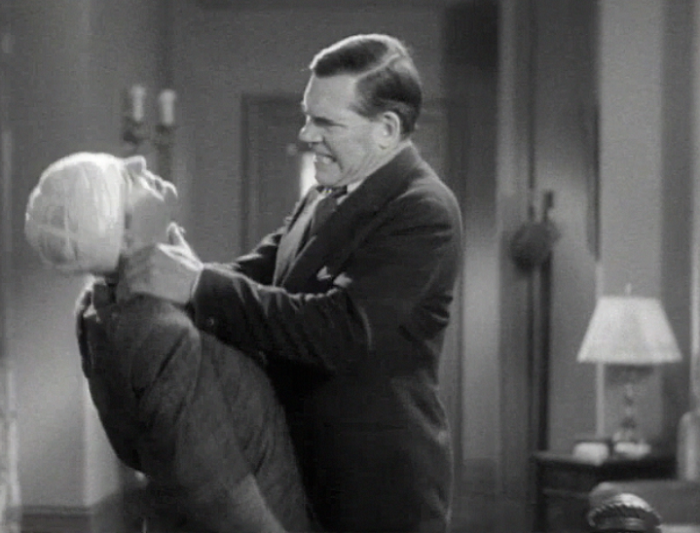
Jim is none too pleased about Ed’s betrayal.
The finale of Beast of the City, which I’ll restrain myself from spoiling for you, is operatic to say the least. Few sequences in film are this brutally violent, with the mobsters scattering like worms and the police, the strong arm of justice, staying in formation and true.
Director Charle Brabin’s camera movies fluidly. While he manages to get some nice shots, there are a couple of truly impressive sequences worth mentioning. One Altman-esque tracking shot takes us through the police precinct, swooping in and out of conversations with considerably flair. Later, his use of camera angles to frame Harlow in the police lineup sets her up as an object of longing, and the later framing of her dance sequence with Wallace Ford’s back to the audience only adds to her erotic mystique.
Harlow is really quite good here. Compared to her work in stuff like Iron Man or The Secret 6, she’s moved beyond being just eye candy but contains a great deal of under-the-surface tension as well. On the other end of the spectrum, few actors simmer as well as Walter Huston, and Wallace Ford, who can be one of the more invisible leading men of the era, does an excellent job of wearing his weaknesses on his sleeve.
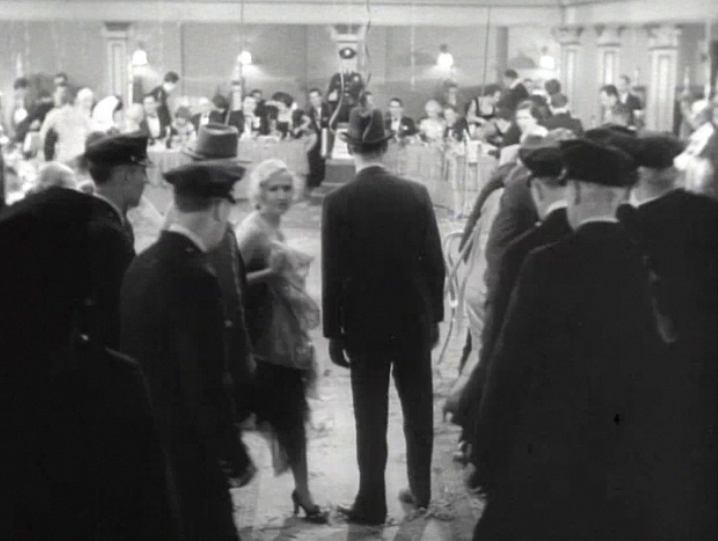
Showdown at the… uh… restaurant.
Some of the film’s most important moments don’t come from either Huston or Ford or even Harlow’s hip gyrations, but from the judge overseeing Ed and the mobster’s trial. After their attorney, Michaels, makes a stirring speech to the jury preying on their fears of police brutality and incompetence, the judge is handed the non-guilty verdict. He closes up by admonishing the jury, saying that he hoped that the verdict of guilty for three men whose reckless actions resulted in the death of a child and a police officer would demonstrate ‘a new public courage’. Instead, they merely have ‘a heart of water’.
And, ultimately, that’s what Beast of the City is about. Its final shot is a moving moment, a grasp that indicates understanding in the weakness of man and shows brotherly love for even one who is weak. This isn’t about the police as a true and noble force, but about the never ending battle of justice against fear. As such, it still works pretty damn well.
Gallery
Here are some extra screenshots I took. Click on any picture to enlarge!
Trivia & Links
- Immortal Ephemera marvels at this one, and includes a number of quotes from the film. He also talks about the residual value of Harlow collectables, a star that’s never gone out of style.
- DVD Savant compares it liberally with Dirty Harry, and makes some observations about the film’s politics– hey, all of the gangsters are dirty foreigners with accents! — that I agree with here.
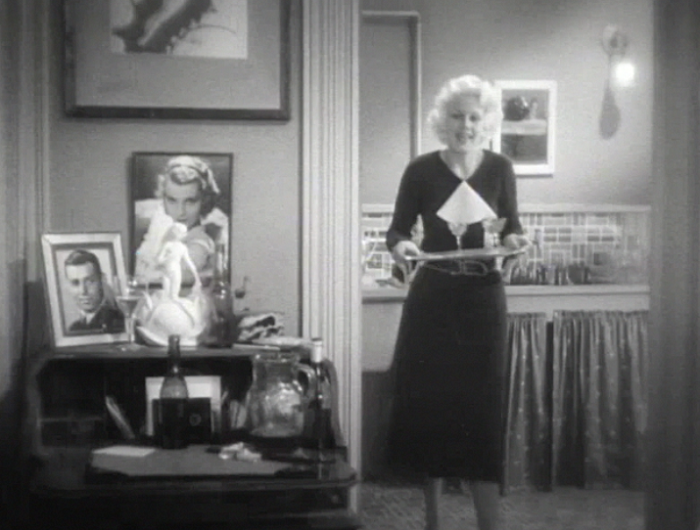
Hey, who’s that on the table?
- The Hollywood Revue sees the film as the antithesis of MGM’s usual glamor image, and points out what a departure it was for the studio at the time.
- DVD Beaver has some screenshots and a couple of posters for your perusal.
- Some stills for you from Dr. Macro.
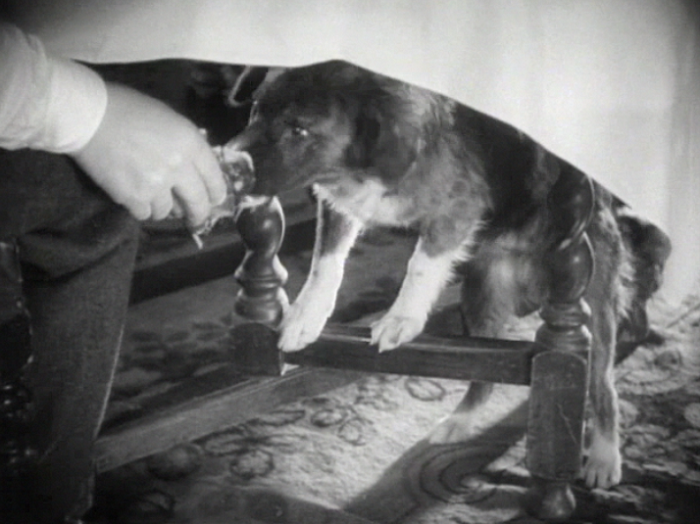
Pre-code dog watch: adorable dog sighted. It is willing to eat disgusting pancakes. Good boy!
- Three Movie Buffs note that Mickey Rooney’s part here was his first role in a talkie. They also take some amusement from the fact that Harlow and Rooney would both go on to be huge draws for MGM, despite the disparity of their career lengths.
- TCMDB talks about how the film affected Harlow’s career and how Louis B. Mayer hated the final result so much that he placed it on the bottom half of double bills.
- One final thing: the film never specifies ‘who’ the titular Beast is. Normally one would assume that it’s the monstrous Belmonte, whose actions are lawless and cruel. However, I think there’s enough wiggle room to point at two other possibilities. One would be Ed, in his negligence and dereliction of duty truly becomes a hideous parody of the values he once upheld. The other may just be the criminal enterprises in total; the beast of the city may be the crime that plagues it relentlessly. This makes the ending a gripping final battle, yet still just a battle in a larger war. This movie was very much made in hopes of making the audience reflect on not just the gangster problem, but what they were doing to facilitate it.
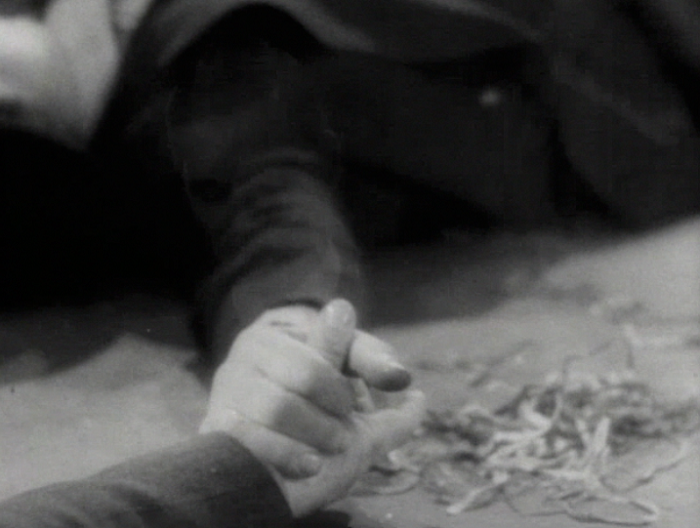
Okay, now that was a sad, thoughtful review. Let’s shake hands and go home.
Awards, Accolades & Availability
- This film appeared in the Wikipedia List of Pre-Code Films.
- This film is available on Amazon and Warner Archive.
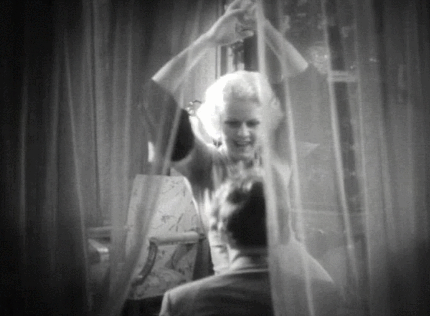 |
Comment below or join our email subscription list on the sidebar!Home | All of Our Reviews | What is Pre-Code? |

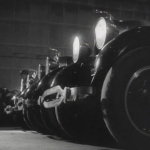
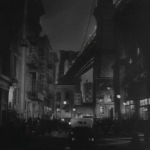
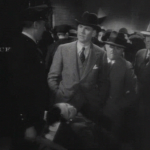
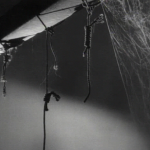
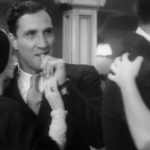
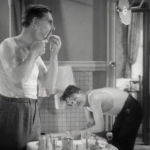
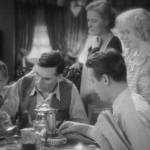
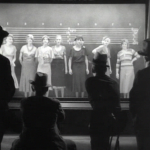
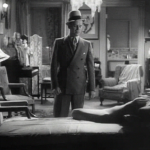
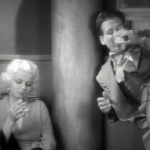
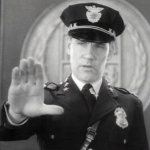
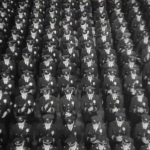
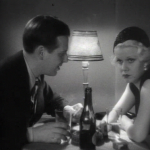

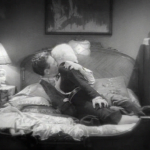
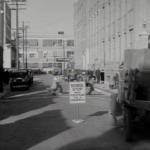
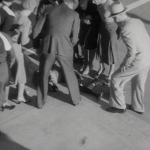
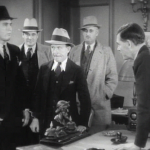
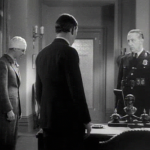
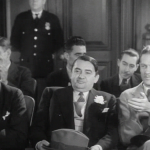
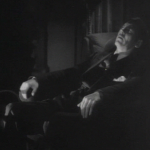
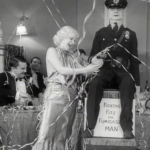
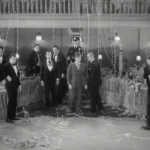
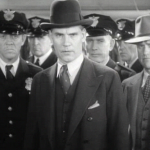
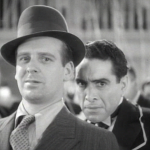
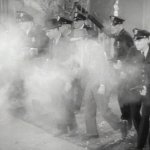

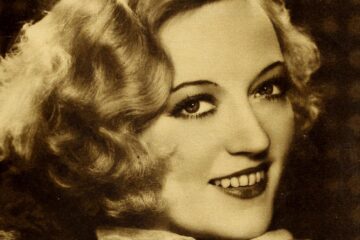
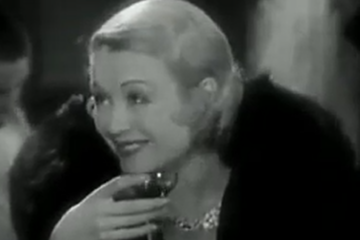
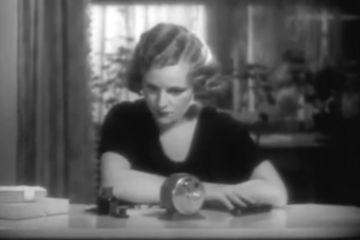
4 Comments
brianpaige · September 8, 2013 at 9:14 am
Glad you reviewed this one and also glad others you mentioned like it. I recall seeing it on TCM some years ago and being shocked at how frank it was and how shockingly violent the climax is (probably more vicious than that year’s Scarface, though not quite as good of an overall movie).
I was also surprised at how much chemistry Wallace Ford and Jean Harlow had here. Ford isn’t really anyone’s idea of a romantic lead, but he worked really well here.
Basically this movie would be like if Dirty Harry popped up in a Martin Scorsese gangster movie, albeit one from 1932.
Danny · September 8, 2013 at 6:55 pm
It’s a surprisingly solid little action film, which is surprising considering the pedigree. I agree that Scarface was better– it has the urgency of talking about a figure while Beast’s rebuttal is a little more vague– but I think the two films compliment each other quite well.
And, yeah. This is one of those movies– like David Manners in Miracle Woman– where I’m so impressed that I go check to see what they’ve done, only to find that I’ve already seen a half dozen of their other movies. I think here he’s such a heel, he knows he’s a heel, but because we can certainly see why he betrayed his badge, that makes him far more interesting/human than the noble Huston.
justjack · September 8, 2013 at 5:33 pm
I assumed the titular Beast was Walter Huston.
I totally loved this movie when I saw it on TCM last year. How MGM managed to make a Warner Bros flick, I dunno.
Great action gif of Harlow doing her dance, Danny. I think the director told Jean not to touch her breasts, and she got so caught up in the scene that she forgot, and then tried to back off from rubbing herself up *too* indecently, and afterwards probably everyone on the set was so slackjawed blood-pounding-in-the-ears to think straight, and the director decided, meh, leave it in.
Danny · September 8, 2013 at 6:45 pm
Huston being the beast is an interesting take, since the movie painstakingly makes him the goody two shoes while also underlining his fanatical devotion to justice. I think the connotation is too negative to assign to Huston, especially since the title is projected above a monstrous looking face.
And I can believe what you’re saying about Harlow’s dance. I only capped a bit of it– it goes on for a nice while– and it’s definitely the scene that sells you on Harlow’s character’s eroticism, and is the perfect lynchpin for the betrayal to come.
Director Charles Brabin also did The Mask of Fu Manchu (which I’ll be hitting in October) where he has a similarly nasty kind of style that MGM didn’t do much of. I’m going to have to look into more of his works.
Comments are closed.